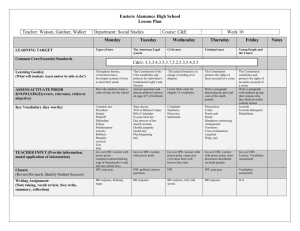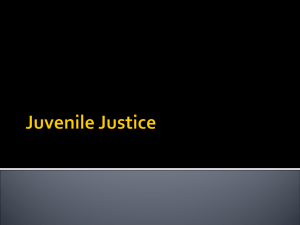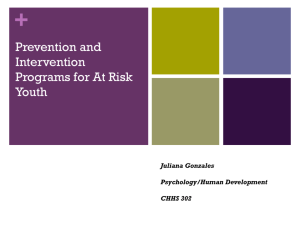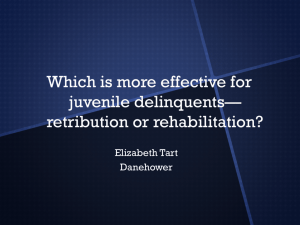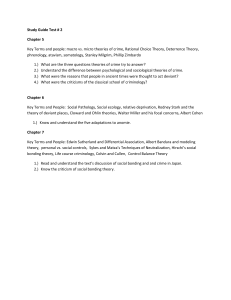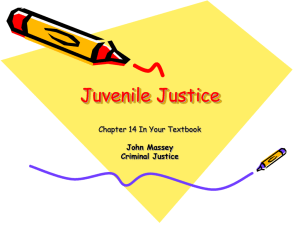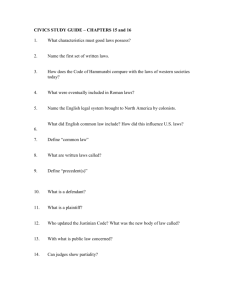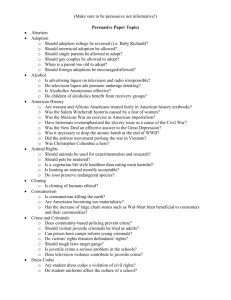CJ 245 Q1 STUDY GUIDE CJ 245 CH 1 Parens patriae The
advertisement
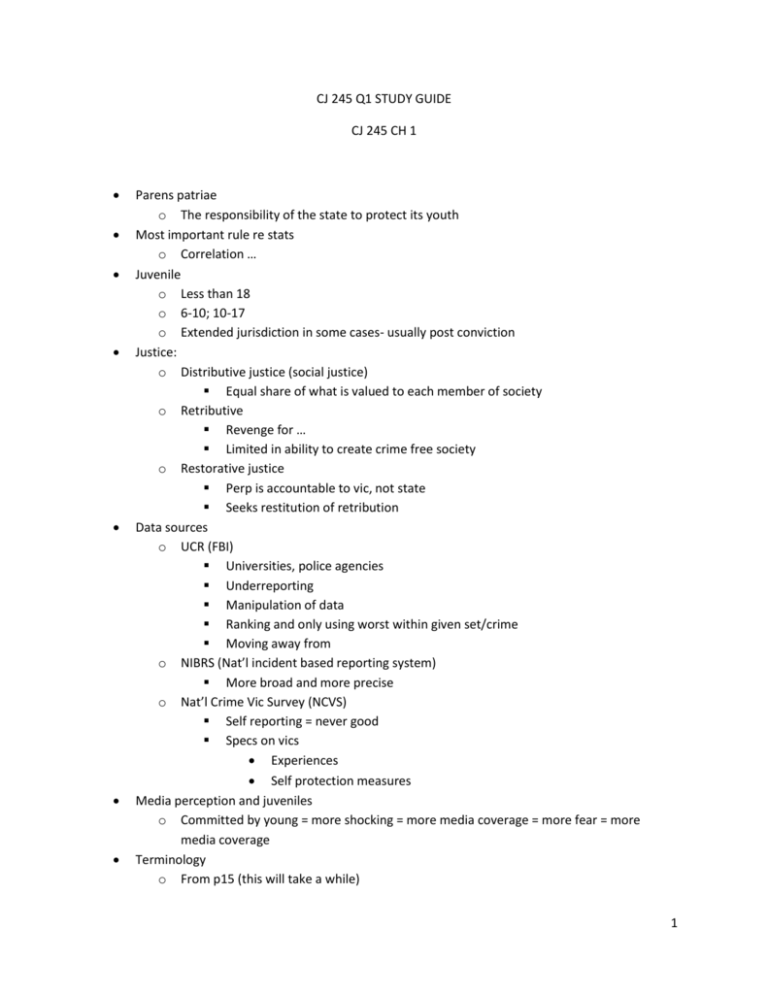
CJ 245 Q1 STUDY GUIDE CJ 245 CH 1 Parens patriae o The responsibility of the state to protect its youth Most important rule re stats o Correlation … Juvenile o Less than 18 o 6-10; 10-17 o Extended jurisdiction in some cases- usually post conviction Justice: o Distributive justice (social justice) Equal share of what is valued to each member of society o Retributive Revenge for … Limited in ability to create crime free society o Restorative justice Perp is accountable to vic, not state Seeks restitution of retribution Data sources o UCR (FBI) Universities, police agencies Underreporting Manipulation of data Ranking and only using worst within given set/crime Moving away from o NIBRS (Nat’l incident based reporting system) More broad and more precise o Nat’l Crime Vic Survey (NCVS) Self reporting = never good Specs on vics Experiences Self protection measures Media perception and juveniles o Committed by young = more shocking = more media coverage = more fear = more media coverage Terminology o From p15 (this will take a while) 1 o Stigmatizing effects of labels Diversion p16 PX p18 o Diversion p20 The funnel effect= farther through system, fewer individuals pass Schools and police at fat end Communication from one end of funnel to the other v. o Privacy of youth o ‘need’ for information abt crime Conservative approach: o Get tough on criminals at any age o Presumes retribution is effective Liberal approach o Treatment and rehabilitation Disproportionate Minority Contact o 34% → 62% o Is it part and parcel with racial discrimination? CJ 245 CH 2 Vocab o Patriarchal society o Corporal punishment o philanthropist English (early) o Church influenced o 7 y/o = age of reason o 7-14: rebuttable presumption o English Reniassance (16th and 17th centuries) Medieval to modern = more humane treatment o Poor laws: QE Poor children indentured with wealthy families to learn trade 200 years o 1817: the London Philanthropic society America (not yet US) o Puritan (1646-1824) (child basically bad) Patria potestas Dad has all power Stubborn child law (status offense) o 7-14 distinction o 1800 Industrial revolution Children in factories 2 Affected family control over children In response Indenture and apprenticeship Private orphanges Public houses for dependent children Mixed Almshouses Jails o 1824 – 1899 Refuge period = houses of refuge For delinquents and poor together State had power to commit children Intervene when parents are incapable o By 1850: reform schools Foster homes Child savers Child basically good- treat as such with problem YMCA YWCA ten years later o Civil war Orphans New troubles with few state tools 1870: first sep juvenile trials 1880: juvenile probation 1899: first juvenile court First Juve court o The progressive era (1890 – 1925) o Juvenile Court Act: 1899 CJ 245 CH 3 THEORIES OF DELINQUENCY AND JUVENILE OFFENDING Malum in se Malum prohibitum Consensus theory o Individuals agree on basic values- laws express these values Hobbes and the social contract o Individuals agree to sacrifice some freedoms to benefit the group Anomie 3 o The breakdown of social norms → chaos Conflict theory o Laws keep dominant group in power Marx: the communist manifesto o Punishment is an inevitable result of capatilism Classical school o Humans have free will and are responsible for own actions o Utilitarianism: laws should bring the greatest happiness the greatest number o Deterrence o Incapacitation Positivist school o Humans are shaped by society and are a product of influences o Individuals are not ruled entirely by free will Together = determinism Bioliogical theories o Physiognomy studies o Character traits by physical feature o Phrenology o Body type o Heredity Twins Adopted o Genes Psychological theories o Juveniles = acting out inner conflicts o Lack of impulse control Intelligence and crime o Be wary o Education and crime much more relevant Freud o Psychoanalysis Personality imbalances from abnormal development Oedipal complex Sociological theories o Human social structures and relationships o Criminals are molded Ecological model o Study of organisms and their environment o Dynamics of urban life Social disorganization theory o Urban areas weaken community controls → subculture of delinquency 4 Functionalism o Society requires functional interdependence Strain theory o The strain comes from the clash between desires and the ability to achieve them Labeling theory o Treated/ act in accordance with label given 5

